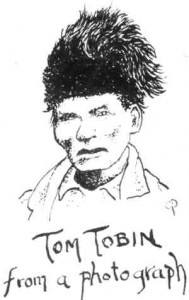Brief by Allen Best
Wildlife – November 2008 – Colorado Central Magazine
For decades wildlife researchers have been trying to figure out the roadkill equivalent of a better mousetrap. They’ve tried tall fences to keep deer and elk off highways, and they’ve tried signs to warn motorists to slow down.
So far, nothing short of very expensive wildlife overpasses works very well in keeping apart car hoods and deer hooves. And despite what you may have heard, there’s no scientific studies to back up the claims of those sonic deer-whistles you could buy at Wal-Mart.
But now, the Colorado Department of Transportation has a $1 million experiment underway on the flanks of the San Juan Mountains, just east of Durango. There, a wildlife detection system unlike any other that now exists in the United States has been installed.
The technology is already in use at prisons, airports, and military operations. Cables have been buried a foot deep and lateral to the highway. Deer, elk and other large animals trigger changes in the earth’s electromagnetic field. This change is detected by the cable, which then transmits signals to two signs, one in each direction, that alert motorists to the presence of wildlife.
“One reason we looked at the system for this area is that it’s a known migration route,” explained Nancy Shanks, a spokesman for C-DOT. “Instead of setting up a barrier, with fencing, we wanted to allow free movement of deer and elk to their various habitats, and instead change motorists’ behavior.”
The major question here is whether real-time warnings will slow traffic sufficiently to avoid collisions. Early anecdotal evidence suggests success, but the Western Transportation Institute of Bozeman, Mont., has allocated $150,000 for an independent and multi-year evaluation.
Something similar was tried in Wyoming, between Pinedale and Jackson Hole. There, infrared lights are used to detect movement of large animals. However, tumble weeds and heavy snowfall also triggered the flashing signs, causing motorists to disregard them.
Better results are reported from a refined use of infrared light technology in an experiment in Yellowstone National Park, in the Gallatin River Valley. Only one collision with wildlife occurred, says Rob Ament, road ecology program manager with the Western Transportation Institute.
“It’s all about sensitivity of the beam, so that it’s catching animals and not the smaller stuff,” he said.
The institute has been conducting research near most of the ski towns of the West.

